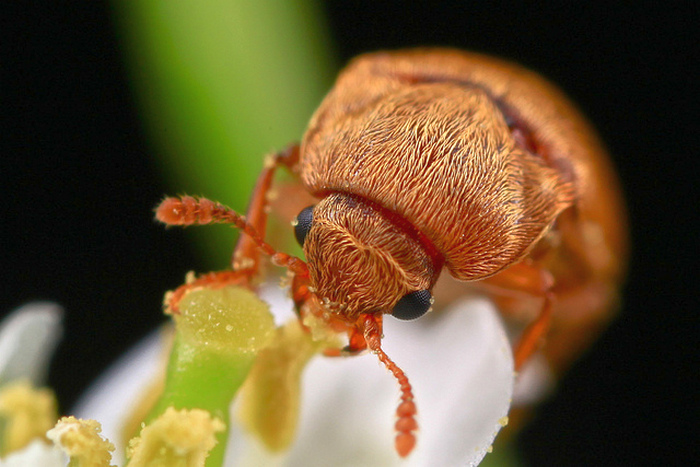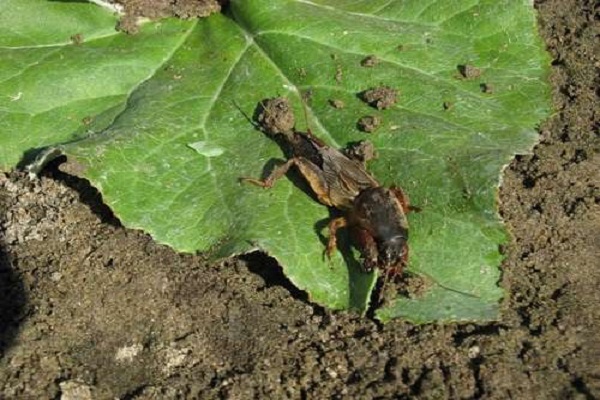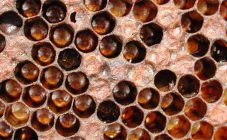Content:
The wasp is famous for its catchy color, hostile behavior, an addiction to sweets, a painful sting.
Insects that resemble a wasp differ in both habits and lifestyle from the Hymenoptera. The phenomenon that mimics the image is called defensive disguise. Research confirms that pests are loyal to their own kind.
A fly with a long black body and a sting
The wasp-like insect has an external resemblance to an earthen wasp. The predator has a long black body and mustache. The bug resembles a wasp because of the striped abdomen.
A striped black and yellow fly like a wasp is classified as a predator, which easily attacks poisonous spiders. Found everywhere. Some representatives even inhabit the tropics. Some tropical species prefer human blood or mammals. During the day they hide in a shelter, they hunt at night. Distinctive features: extraordinary composure and the ability to watch the victim for a long time.
The aggressor instantly rushes into the attack, sticks the sting and injects the toxin. The poison will instantly paralyze the victim.
Similar behavior occurs in the road wasp. The predator produces eggs on the victim's body. The larvae dig into the abdomen of insects, gnaw out the insides. Until the end of the cycle, the remainder of the beetle or spider is only a bioshell.
The main differences from the wasp
The wasp fly differs from dangerous pests:
- the presence of 1 pair of wings, the bee has 4;
- width and dimensions of the wings;
- hovering in the air and changing the direction of flight, thanks to the reduced wings - halteres;
- the fineness of the limbs, on which the pollen does not accumulate, in comparison with the bee;
- small down instead of coarse hairs on the sirfid's body, like a bumblebee;
- wasp belong to non-social insects, some individuals live separately and are grouped only when mating.
Large striped fly
Sirphids, or hoverflies, represent a family of 6,000 species. Outwardly, they resemble bees, wasps, and bumblebees. They are widely distributed in all regions except Antarctica, the desert and the tundra zone. The characteristic sound that the wings make is the basis of the name.
A fly, similar to a wasp, differs in harmlessness to humans. She is often seen in vegetable beds with carrots, dill, celery, parsley. In the diet of adults, sirfids only contain flower nectar and pollen. Refers to pollinating insects.
Feeding sirphid larvae
The hoverfly larvae look like small leeches. The wrinkled body has a green or yellowish color. Mobility is not typical for legless individuals. The power supply includes:
- spider mite;
- oviposition parasites;
- aphid.
Physical activity is developed only when hunting aphids. The hoverfly rises, sways from side to side, quickly attacks the victim, absorbs it. Further, in search of food, the larva moves, trying to roll the body weight.
The basis of the sirfid menu is vegetable nectar sugar, which replenishes the insect's energy reserves. The primary source of protein is pollen, which is required for the proper development and growth of eggs.
An attentive hoverfly mother lays eggs right in the aphid nursery.
The period of development of babbling larvae ranges from 15 to 20 days. The gluttony of the young is amazing: eating up to 200 aphids by the end of maturation, the destruction of about 2000 small insects during the period of existence.
Reproduction
The emergence of flies with a wasp color falls on the last decade of May - early June. The mating season of insects occurs in the middle of the summer season. One individual carries out egg-laying up to 200 pieces:
- in grass;
- on the branches of crops;
- on the ground surface.
The place of masonry is determined by the type of hoverflies. The eggs develop within 8-12 days. Inactive larvae without legs resemble a greenish, light yellow or pink leech. A thin skin allows you to view the internal organs. At this stage, the hoverfly is 1 cm long.
Depending on the food, the larvae are distinguished:
- larvae that live in reservoirs - detritus;
- predators that feed on fleas, aphids, small pests help summer residents in the fight against parasites;
- herbivorous species that damage lily bulbs and flower stalks of crops;
- manure and wood of dead trees, without which exotic sirfid flies do not do.
After feeding and growing for 14-21 days, the insects transition to the pupa phase with a teardrop shape. Pupae that hibernate have a brown tint. Poor tone - in summer pupae. After 2 weeks, an adult specimen emerges from the puparium, ready to fly after 1-2 hours. The arrival of cold weather - it's time to hide the caterpillars for the winter.
Varieties
The widespread types include:
- Delia antique, or onion hoverfly. The menu of 1 cm larvae includes pulp and juice of bulbous crops.
- Temnostoma vespiform, or wasp-shaped hoverfly. The fly is similar in color and body shape to a wasp, reaching a length of 18 mm. The larvae feed on rotten wood.
- Eristalis, or water sirfida. Inhabits stagnant water bodies, swamps. The insect has a special trunk to breathe and consume air from the surface.
- Eristalis tenax, or tenacious bee. The 15mm insect resembles a bee with a darker shade.
- Flower fly, or common hoverfly. Insect with yellow stripes, which is 12 mm long, is a good pollinator. The larvae eliminate pests in the garden.
- Chrysotoxum. It resembles a large hornet. The dimensions of the individual are 13-18 mm in length. The convex abdomen is covered with yellow stripes, which are interrupted in the middle. A distinctive feature is the brownish shading on the front wings.
Benefit and harm
The wasp fly does not bite - there is no sting or poison. The benefits and harms are caused by the type of hoverflies.
Attention! The larvae of predatory types of sirphids are the defenders of the orchard and destroy parasites.
Hoverfly larvae pollinate flowering plants. This is required in mountainous regions due to the shortage of bees.
Herbivorous hoverflies cause problems in the garden, harm garlic and onions, tulip and hyacinth bulbs, gladioli and daffodils. As a result, infected flowers get sick and dry out.
How to fight
Bulbous plantings must be carefully inspected in order to identify harmful insects and take adequate measures:
- Remove and incinerate affected cultures immediately.
- Treat the site with insecticides: Decis, Aktara.
- Observe the crop rotation of flowering plants every year.
- Planting carrots in the garden - its smell will scare off onion flies and sirfids.
- Loosen and mulch the soil to avoid compaction - prevents the emergence of hoverflies.
- The plantings are treated with tobacco dust, red pepper, naphthalene, wood ash to prevent the appearance of female onion sirfids.
- Spray the area with copper sulfate after harvesting the garlic or onion.
Curious facts
Interesting Babbling Insect Facts:
- Imitation of bees rescues sirphids from insectivorous birds. Larvae hatch during the summer of wasps. Their parents teach them to beware of the striped hymenoptera. The period of flight of hoverflies falls at a time when grown-up children do not risk attacking suspicious flies.
- Males of wasp insects hang in the air for a long time, guard their space and females during the mating season.
- Mating of insects takes place in the air.
A fly that looks like a bumblebee
Bumblebee
Volucella, or bumblebee, or murmur, belongs to the subfamily Eristalinae of the genus of hoverflies.
Murmur belongs to migratory insects. Males are often territorial.
Bumblebee flies have a distinctive plume awn and a head expanding downward. On the hairy abdomen, two belts of black tone stand out.
Murmur - imitators of bumblebees that lay eggs in their nests. The appearance of an insect is often deceiving. The bumblebee fly that peacefully collects pollen is the merciless enemy of wasps. The larvae live in the hives of social wasps and bumblebees and feed on eggs, pupae, and also adults. Some bumblebees feed on the remains of decomposed organic matter. Scavenger larvae belong to the genus Vespula.
Volucella inanis is one of the species. The insect is called a devastating insect, but it does not have a sting, in its nutrition it is nectar. Culinary addictions of a predatory insect - devouring hornet larvae, bumblebees, wasps. The harmless fly is found in different regions of Russia.
Bumblebee proboscis
In summer, furry butterflies are noticed on honeysuckle flowers, which is easily confused with bumblebees:
- short, slightly thickened body;
- yellow-brownish color;
- transparent wings.
We are talking about the bumblebee, or the honeysuckle hawk. The insect extracts nectar with an elongated proboscis. Moths emerge from May to July.
The appearance of caterpillars is associated with the height of summer. Individuals are characterized by:
- rich green body;
- the presence of a horn;
- spherical head;
- 2 stripes of a whitish shade along the length of the back.
Caterpillars love to settle down on low crops, eat young leaves. By the end of the summer season, they are at the pupal stage, so the pests are going to winter.
Proboscis is easy to find by feeding habits: snowberry and honeysuckle, the leaves of which are eaten by caterpillars.
For prevention, you will need to periodically inspect the plants and take appropriate measures.
At the sight of single individuals, bumblebees manage to collect caterpillars manually. In case of mass defeat, the use of insecticides is appropriate:
- Decis (for 10 liters of liquid 2 ml);
- Kinmix (for 10 liters of water 2.5 ml).
The danger and harm of the larvae of the bee fly
Eristalis tenax, or mudflowers, are the larvae of the bee fly that live at the bottom of small and muddy ponds and lakes, puddles, and farm wastewater. For breathing, they float to the water surface and expose a long tube that reaches 27 cm and is capable of shrinking and enlarging. Because of the similarity to the tail, the beekeeper larvae are called rats.
The adult that hatches from the larva is the eristalia fly. Flies out in the autumn season, in the diet - flower nectar.
In appearance and color it resembles a bee. The larva of the bee fly has an undeveloped head section and no eyes. The underdeveloped mouth is covered with a fold. There are no legs, but growths are visible at the bottom of the calf. The rat has 7 pairs of false legs: 6 on the abdomen and 1 on the chest. Thanks to them, the fly crawls. 2 cm cylinder with a pre-long tube at the end, which allows you to live in polluted or oxygen-free waters.
If it is time for pupation, the bee creeps out to the coast. It transforms into a pupa inside the larval skin.
A couple of centuries ago, there was an opinion about the birth of bees from carrion. The reason for the myth was a rat, which is able to live in a rotten liquid and turn into a wasp fly.
The ingestion of the bee larvae into the human body generates random intestinal myiasis. Infection occurs when the eggs of the pathogen are swallowed with food or the fly lays eggs in the anus, from where the larvae make their way into the rectum.
Symptoms, diagnosis, therapy
The maturation of the larvae in the intestines leads to the development of enteritis.
Its manifestations:
- abdominal pain and diarrhea;
- nausea and anal itching;
- insomnia and dizziness;
- lethargy.
Sometimes the disease is asymptomatic.
Diagnose the disease, thanks to laboratory tests of feces. Treat with laxatives, metronidazole, nifuroxazide.
Eristalis tenax larvae are the cause of urogenital myiasis or vulvar myiasis.
Pathology is registered in:
- Africa and India;
- Argentina and Iran;
- Australia and Chile;
- Brazil and European countries (Spain, Belgium, Denmark).
Hoverflies, or sirphids, are easy to confuse with their stinging counterparts: a bee or a wasp. They are an important component of the biosphere. Flies cleanse the planet of plant debris and are not safe for humans.

















